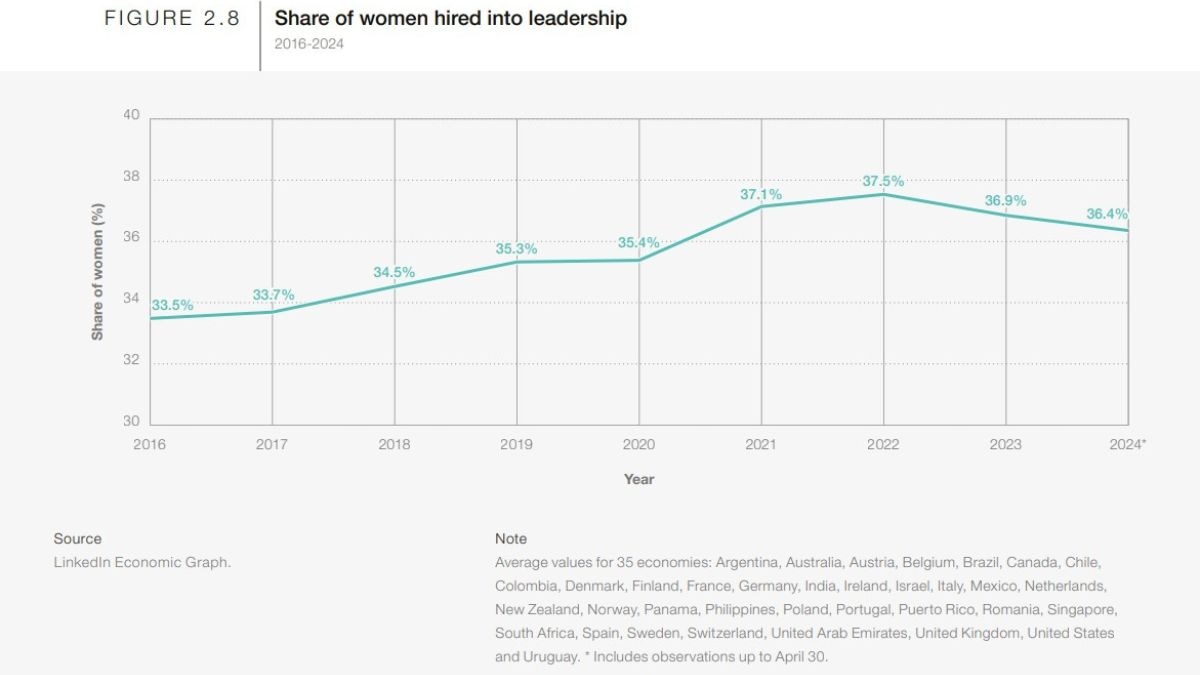Gender Parity In Labour Force Participation Sees Gains, Says WEF 2024 Report
WEF Global Gender Gap Report 2024: According to data from 101 economies tracked since 2006, the participation rate has rebounded from 63.5 per cent in 2023 to 65.7 per cent in 2024

WEF Global Gender Gap Report 2024: The World Economic Forum's 2024 report on the Global Gender Gap shows Gender parity in labour-force participation has shown some improvement. According to data from 101 economies tracked since 2006, the participation rate has rebounded from 63.5 per cent in 2023 to 65.7 per cent in 2024. However, the pandemic left "pockets of missing workers," particularly in low-income economies, as highlighted by the International Labour Organization (ILO).
US Sees Record Female Workforce Participation
In the United States (US), the number of women in the job market reached a historic high. The US Department of Labour attributes this to the rise of remote work, especially benefiting working mothers. Nevertheless, the lack of robust childcare systems dampens the optimism surrounding this development.
Regional Variations in Gender Parity
Southern Asia and Sub-Saharan Africa have experienced significant improvements in gender parity, with rates rising to 42.6 per cent and 83.9 per cent, respectively in 2024. In these regions, women's participation in the labour force has increased more rapidly than men's since 2020.
In contrast, Northern America and Europe show moderate improvements, with gender parity rates reaching 84.6 per cent and 77.4 per cent, respectively. The increase in men's participation rates in Europe and a stable rate in Northern America contribute to these figures.
However, the Middle East and North Africa region continues to lag, with gender parity in labour-force participation at an average of 28 per cent in 2024, down from 30.8 per cent in 2019. Despite this, countries like Saudi Arabia, Bahrain, and the UAE have made significant strides, with Saudi Arabia nearly doubling its female labour-force participation from 22.5 per cent in 2006 to 43.2 per cent in 2024.
Employment Rates and Labour Market Dynamics
Employment rates are mirroring the positive trends in women’s labour-force participation. In the OECD area, 2024 has seen record employment rates for both men and women, with women’s employment rate increasing faster, thus narrowing the gender gap. In Europe, the labour force now includes a larger share of female, older, and highly educated workers. Factors such as labour mobility in the eurozone, subsidised childcare, family leave policies, job-retention schemes, and delayed retirement have contributed to this shift.
Despite these positive trends, the ILO warns that global unemployment is expected to rise in lower-income economies, potentially increasing poverty rates. Moreover, the gendered jobs gap remains a significant issue, with women disproportionately affected due to constraints in rapidly taking up new employment opportunities.
Workforce Representation and Leadership
Data from LinkedIn indicates that women’s representation in the workforce remains below that of men across almost all industries and economies analysed. Women account for 42 per cent of the global workforce, a slight decrease over the past two years, reverting to 2018 levels. However, women's representation in senior leadership positions has fared slightly better, increasing from 30.4 per cent in 2016 to 32 per cent in 2023, with a slight drop to 31.7 per cent in early 2024.
Challenges
While the global economic outlook for 2024 shows reserved optimism, challenges remain, particularly in achieving gender parity in labour-force participation and addressing the gendered jobs gap. Continued efforts and targeted policies are essential to sustain and further these positive trends.
India Drops 2 Places
As per the report, India, with a score of 0.641, ranks 129th, having dropped two places since 2023. Among its immediate neighbors, Bangladesh ranks 99th, Nepal 117th, and Sri Lanka 122nd. The top 10 most gender-equal nations are all located in Europe, with Iceland maintaining its leading position with a score of 0.935. Following Iceland are Finland and Norway, both scoring 0.875, New Zealand at 0.835, Sweden at 0.816, Nicaragua at 0.811, Germany at 0.810, Namibia at 0.805, Ireland at 0.802, and Spain at 0.797.
Related Video
Union Budget 2025: Arvind Kejriwal lists the shortcomings of the Modi government's budget | ABP News | AAP





































